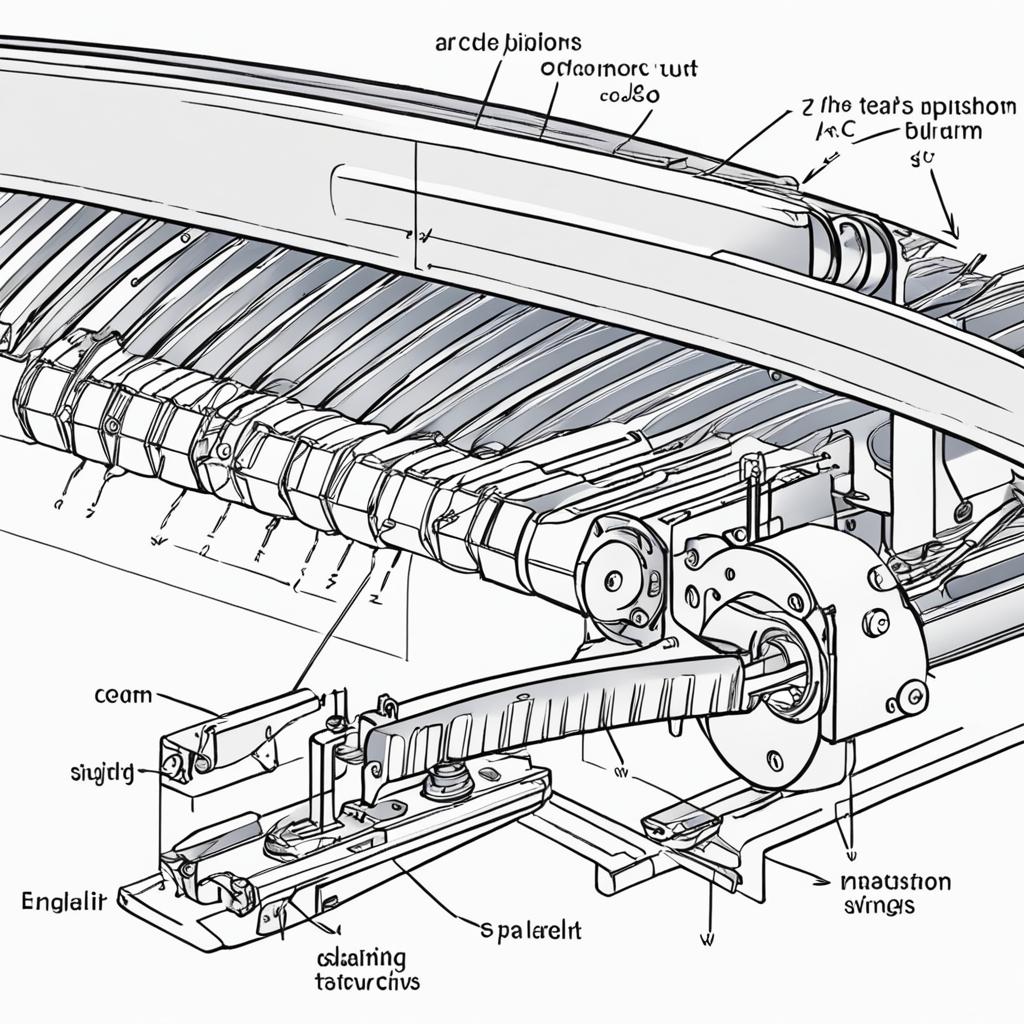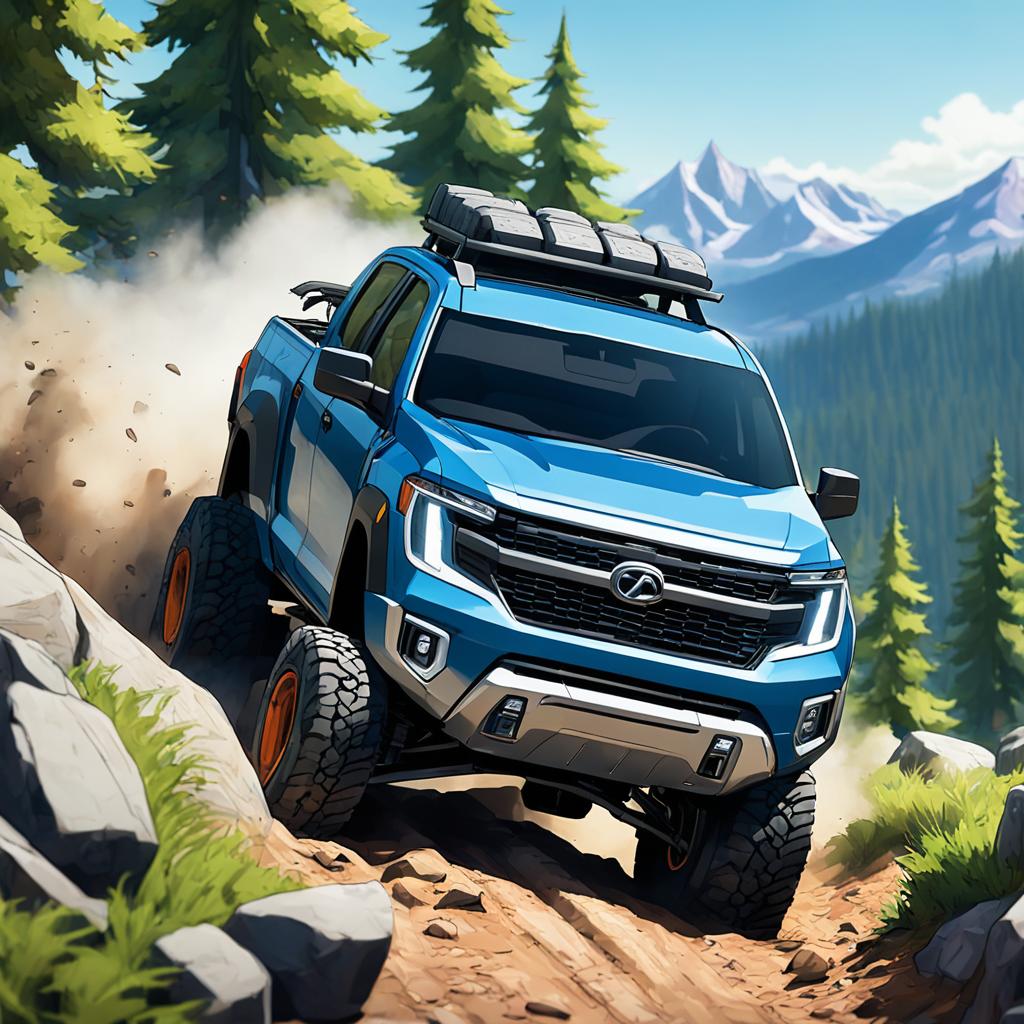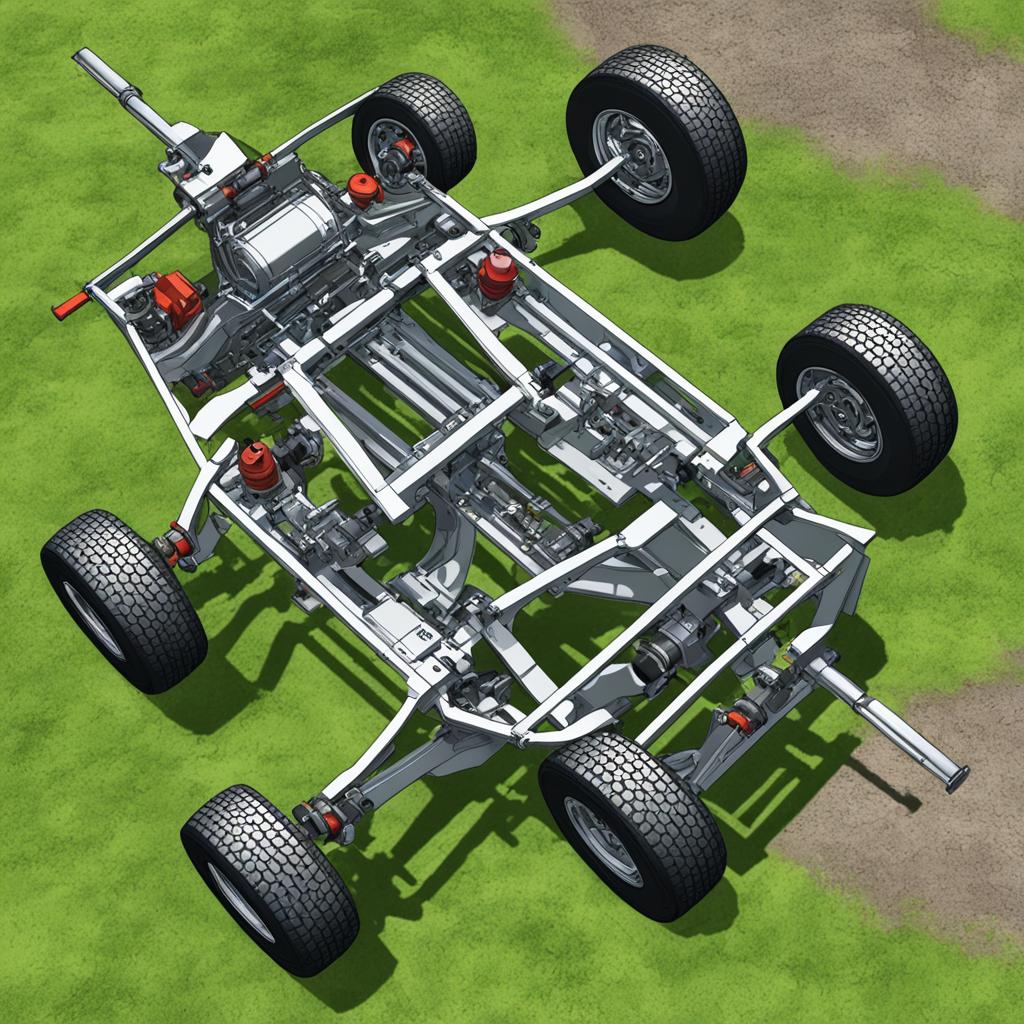Are you looking to optimize your vehicle’s suspension and achieve greater off-road capabilities? If so, you might be surprised to learn that leaf springs, known for their simplicity and durability, can be enhanced to provide more travel and improve performance.
But how exactly can you unlock the full potential of leaf springs? What modifications and adjustments can be made to achieve a smoother, more capable off-road experience? In this article, we’ll explore the key factors that affect leaf spring performance and provide you with valuable insights on how to optimize your vehicle’s suspension system.
Understanding Leaf Spring Suspensions
In the world of suspension systems, leaf springs have stood the test of time. Although coil springs have gained popularity in modern vehicles, leaf springs remain a common choice, especially for the rear suspension of pickup trucks. The appeal of leaf springs lies in their simplistic design and inexpensive nature, making them an attractive option for many vehicle owners.
Leaf springs consist of multiple thin leaves stacked on top of each other and are held together with clamps or a center bolt. This design provides support to the vehicle’s chassis, maintains proper axle positioning, and offers compliance with varying terrain conditions. The number of leaves in the spring pack and other design features can significantly impact the ride quality and overall performance of the leaf spring suspension.
Compared to coil springs, leaf springs offer a more straightforward and cost-effective solution. The manufacturing process of leaf springs is relatively uncomplicated, contributing to their affordability. Additionally, the leaf spring suspension system requires minimal maintenance and is known for its durability, making it an ideal choice for off-road enthusiasts and heavy-duty applications.
Despite their simplicity, leaf springs are not without their drawbacks. The design can be less flexible compared to coil springs, which may result in reduced articulation and limited wheel travel. However, with proper modifications and adjustments, leaf springs can be optimized to provide a smoother ride and better off-road performance.
Factors Affecting Leaf Spring Performance
To get more travel and optimize the performance of your leaf springs, there are several factors to consider. The configuration of the leaf springs, including the spring length and the positioning of the springs and shackles, can have a significant impact on the behavior and articulation of your vehicle’s suspension.
The length of the leaf springs is an essential factor to consider. Longer springs generally provide more travel, allowing your suspension to absorb bumps and obstacles more effectively. Conversely, shorter springs may limit your vehicle’s articulation and overall performance off-road.
Another crucial aspect is the shackle and spring mounting. The positioning and design of the shackles can influence how the leaf springs interact with the suspension system. Proper shackle and spring mounting can promote better articulation and prevent binding, ultimately improving the ride quality and overall performance.
The construction of the leaf springs also plays a significant role. The number of leaves in the spring pack, the presence of military wraps, and the eye configurations can all impact the durability and performance of the suspension. A higher number of leaves and appropriate military wraps can enhance the leaf spring’s ability to support heavier loads and withstand off-road conditions.
In summary, optimizing the leaf spring configuration, considering the spring length, ensuring proper shackle and spring mounting, and choosing leaf springs with durable construction are all essential factors to enhance the performance of your vehicle’s suspension.
Adjusting Leaf Spring Geometry

The geometry of the leaf springs is a critical factor in determining the performance of your suspension system. By making adjustments to the shackle angles, shackle length, spring arch, and eye configurations, you can optimize the behavior and travel capability of your leaf springs.
Let’s start with the shackle angles. The shackle angles refer to the angle at which the leaf springs are attached to the vehicle frame. By modifying the shackle angles, you can influence the suspension’s ability to compress and extend smoothly, which in turn affects the overall ride quality and articulation of the vehicle.
Next, consider the shackle length. The shackle length determines the distance between the spring eye and the shackle attachment point. Adjusting the shackle length can have an impact on the suspension’s ability to flex and absorb shocks effectively, ultimately affecting the overall performance and comfort of your off-road vehicle.
Another important aspect is the spring arch. The spring arch refers to the curvature of the leaf springs. By adjusting the spring arch, you can alter the spring rate and the amount of flex allowed in the suspension. Finding the right balance in spring arch is crucial to achieving optimal performance and travel.
Lastly, let’s talk about eye configurations. The eye configurations refer to the shape and orientation of the spring eyes. Different eye configurations can determine the load capacity, overall behavior, and durability of the leaf springs. It is important to choose the appropriate eye configuration based on your specific needs and vehicle requirements.
Adjusting the shackle angles, shackle length, spring arch, and eye configurations requires careful consideration and experimentation. Consulting with suspension experts or referring to vehicle-specific recommendations can provide valuable insights for achieving the best performance and travel capabilities with your leaf springs.
| Factor | Description |
|---|---|
| Shackle Angles | The angle at which the leaf springs are attached to the vehicle frame. Modifying the shackle angles can impact the suspension’s ability to compress and extend smoothly. |
| Shackle Length | The distance between the spring eye and the shackle attachment point. Adjusting the shackle length affects the suspension’s ability to flex and absorb shocks effectively. |
| Spring Arch | The curvature of the leaf springs. Adjusting the spring arch alters the spring rate and flex allowed in the suspension. |
| Eye Configurations | The shape and orientation of the spring eyes. Different eye configurations impact the load capacity, behavior, and durability of the leaf springs. |
Upgrading Leaf Spring Components

Upgrading certain components of your leaf springs can significantly improve their performance. By investing in high-quality accessories and enhancements, you can enhance the functionality and durability of your suspension system. Here are some key components to consider:
- Bolt clamps: Upgrade from crush style clamps to bolt clamps to reduce friction and improve leaf separation. These clamps offer better stability and allow for smoother suspension movement.
- Shot-peened leaves: Replace your existing leaves with shot-peened ones to gain additional strength and resistance to fatigue. Shot peening is a process that increases the hardness of the metal, making it more durable and long-lasting.
- Teflon sliders: Install Teflon sliders between the leaves of your leaf springs to minimize friction and ensure smooth articulation. These sliders reduce wear and tear and can be replaced when necessary.
- Lift blocks: Lift blocks can be utilized to increase the distance between the axle and the spring pack, allowing for the installation of larger tires. However, it’s important to exercise caution when using lift blocks, especially in the front axle, as they can impact the stability and handling of your vehicle.
By upgrading these components, you can optimize the performance of your leaf springs, resulting in improved suspension capabilities and a better off-road experience.
| Component | Key Benefit |
|---|---|
| Bolt clamps | Reduce friction and improve leaf separation |
| Shot-peened leaves | Increased strength and resistance to fatigue |
| Teflon sliders | Minimize friction and promote smooth articulation |
| Lift blocks | Allow for installation of larger tires (exercise caution when using) |
Optimizing Leaf Spring Setup

When it comes to getting the most out of your leaf springs, optimizing their setup is key. By making specific adjustments and additions, you can greatly enhance the performance and capabilities of your suspension system. Here are some crucial aspects to consider:
1. Axle Location
The position of your axle plays a significant role in suspension performance. While there is a limit to how much you can adjust the axle location, even minor tweaks can have a noticeable impact. Experiment with different axle positions to find the optimal setup that suits your driving preferences and off-road requirements.
2. Spring Length
The length of your leaf springs directly affects the travel and load capacity of your vehicle. Choosing the right spring length is crucial for achieving the desired performance. Longer springs can provide greater articulation and a smoother off-road experience, while shorter springs are ideal for heavy-duty applications. Consider the weight distribution and load requirements of your vehicle when selecting the appropriate spring length.
3. Clamps
Properly positioning and utilizing clamps is essential in preventing lateral movement of the leaf springs. These clamps help maintain the alignment of the springs and promote better articulation. When installing clamps, ensure they are securely fastened and positioned to prevent any unwanted shifting during challenging off-road conditions.
4. Traction Bar
Adding a traction bar to your leaf spring setup can significantly improve axle control and stability. Traction bars help manage axle wrap, reducing the chances of wheel hop and improving overall performance. By controlling the movement of the axle, traction bars enhance traction and minimize power loss during acceleration.
By focusing on optimizing these aspects of your leaf spring setup, you can ensure the best possible performance and capabilities for your off-road adventures. Experiment with different adjustments and fine-tune your setup to achieve the desired balance between comfort, traction, and stability.
Considering Leaf Spring Upgrades
If you’re seeking maximum performance and travel for your off-road adventures, it may be time to consider upgrading your leaf springs. Upgrades can enhance your vehicle’s suspension system, providing improved durability, load capacity, and overall performance. Two options to explore when upgrading leaf springs are custom springs and off-the-shelf options.
Custom Springs
Custom springs offer the advantage of being tailored specifically to your vehicle’s needs. You can work with a reputable manufacturer to design leaf springs that match your desired length, load capacity, and arch. These custom springs are built to your specifications, ensuring optimal performance and durability. Custom springs are an excellent choice for off-road enthusiasts who require specialized suspension solutions to meet their unique demands.
Off-the-Shelf Options
If you prefer a more convenient and readily available solution, off-the-shelf options are a viable choice for leaf spring upgrades. These pre-manufactured springs are designed to fit a range of vehicle models and applications. When considering off-the-shelf options, it’s important to evaluate the durability and suitability of the springs for your specific needs. Look for reputable brands that offer high-quality leaf springs known for their longevity and performance.
When selecting leaf spring upgrades, keep in mind that longer springs generally provide better fatigue life. However, it’s essential to strike a balance as there is a practical limit to the number of leaves in a pack for optimal performance. Consider your vehicle’s suspension requirements and consult with experts to determine the most suitable spring length for your off-road adventures.
To help you make an informed decision, here’s a comparison table showcasing some key features of custom springs and off-the-shelf options:
| Comparison | Custom Springs | Off-the-Shelf Options |
|---|---|---|
| Customizability | Highly customizable to meet specific needs | Pre-manufactured, limited customization |
| Fitment | Precisely fitted to your vehicle | Designed to fit a range of models |
| Durability | Optimized for longevity and performance | Varies among brands, choose reputable options |
Both custom springs and off-the-shelf options offer their own advantages, so it’s crucial to assess your specific needs and preferences. Consider factors such as customization requirements, fitment, and desired durability when making your decision. Upgrading your leaf springs can significantly enhance your vehicle’s suspension performance, allowing you to tackle challenging off-road terrains with confidence.
Choosing the Right Leaf Springs
When it comes to optimizing your vehicle’s suspension, choosing the right leaf springs is key. These components play a crucial role in achieving the desired ride quality and articulation for your off-road adventures. While budget is an important consideration, investing in high-quality leaf springs can significantly improve the performance and capability of your suspension system.
One of the factors to consider is the spring quality. Look for springs that are made from durable materials and designed to withstand the demands of off-road terrain. The spring rate, or stiffness, should be suitable for your vehicle’s weight and intended use. Additionally, the number of leaves in the spring pack can affect the flexibility and load capacity of the suspension.
Another aspect to evaluate is the overall construction of the leaf springs. Pay attention to details such as the design of the eye configurations and the use of military wraps, as they can contribute to the longevity and durability of the springs. By investing in high-quality leaf springs, you can ensure a smoother ride and better articulation, allowing your vehicle to navigate obstacles with ease.
While budget considerations are important, it is worth prioritizing the ride quality and capabilities of your off-road vehicle. Research different brands and compare their offerings, taking into account the specific requirements of your vehicle. By choosing the right leaf springs, you can optimize your suspension system and enjoy a more comfortable, capable ride on and off the road.


